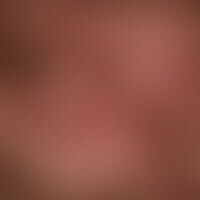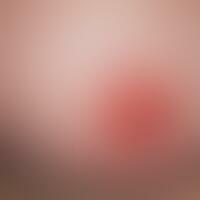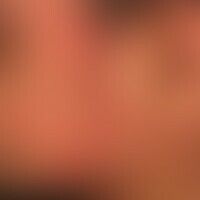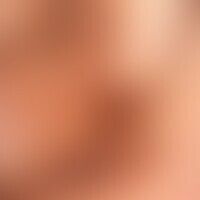Image diagnoses for "Plaque (raised surface > 1cm)"
570 results with 2866 images
Results forPlaque (raised surface > 1cm)
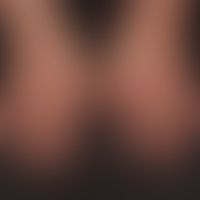
Dermatomyositis (overview) M33.-
Dermatomyositis (overview): Striped arrangement of red papules and plaques, which confluent to flat areas in the area of the end phalanges; strongly pronounced nail fold capillaries.
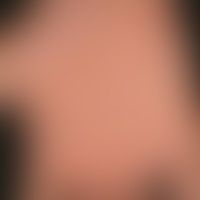
Psoriasis palmaris et plantaris (plaque type) L40.3
Psoriasis palmaris et plantaris (plaquet type): flat (rather discreet) reddening of the palm. circumscribed keratotic plaques and individual erosions and rhagades. no blisters or blisters.
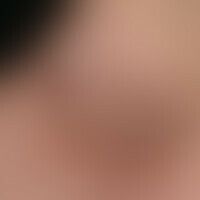
Nummular dermatitis L30.0
Nummular dermatitis ( nummular/microbial eczema): Chronically active, 8-week-old, approx. 8 cm tall, brownish, raised, partly eroded, partly crusty, solid, considerably itchy plaque in a 47-year-old man.
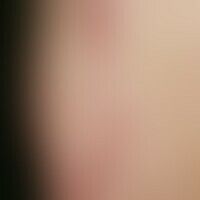
Ilven Q82.5
ILVEN: Chronic stationary, red, rough (hyperkeratotic), passager itchy, linearly arranged papules and plaques on the right arch of the foot of a 10-year-old boy.

Naevus melanocytic congenital bathing trunks D22.L
Nevus melanocytic congenital bathing trunk nevus: congenital, large melanocytic nevus on the trunk with preference for those of the trunk and thighs.
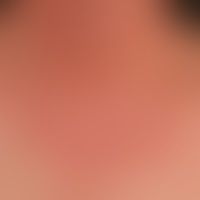
Airborne contact dermatitis L23.8
Airborne Contact Dermatitis: Subacute, blurred, red plaque. the blurred transition to the non-free skin areas is marked by the oval and arrows. in case of toxic dermatitis, a sharply defined marking line would be expected.

Lupus erythematodes chronicus discoides L93.0
Lupus erythematodes chronicus discoides: blurred, red and brown, partly scaly and crusty, hypersensitive plaque.
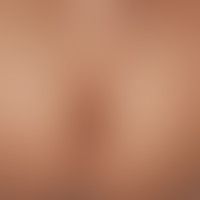
Larva migrans B76.9
Larva migrans. itchy disease of an infant. occurred after a stay in kenya 1 week ago. several, at the buttocks localized, irregularly distributed, sharply defined, linear, firm, red, smooth structures.

Lichen simplex chronicus L28.0
Lichen simplex chronicus indark skin. 0.1-0.2 cm large, marginally disseminated, firm brown-black (red shade is missing) papules which confluent in the centre of the lesion to form a flat, lichenoid shiny plaque.

Nummular dermatitis L30.0
Nummular dermatitis:Extensive nummular lesions that havebeenpresent for several months with blurred, considerably itchy papules and confluent plaques. No hinwesi for psoriasis. No evidence of atopic diathesis.

Eyelid dermatitis (overview) H01.11
Atopic eyelid dermatitis: Severe, chronic, persistent, atopic dermatitis of the eyelids; torturous itching; recurrent morning swelling of the eyelids.
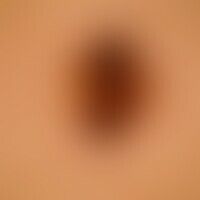
Nevus spitz D22.-
Nevus Spitz. reflected light microscopy of the previously clinically imaged nevus. irregular pigmentation; radial-strictive basic architecture, which is particularly visible at the edges, no vascular polymorphies.

Nevus melanocytic acral D22.L
nevus melanocytic acral: completely sympotmless, congenital melanocytic, nevus that covers the sole and back of the foot. bizarre lateral borders, different shades of brown and black. six-monthly controls are indicated.
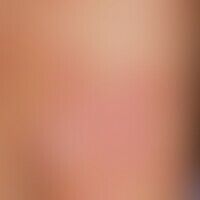
Tinea corporis B35.4
Tinea corporis:multiple, partly confluent, 0.5-8.0 cm large, marginalized, in older flocks centrally healing (anular), psoriasiform scaling, red papules and plaques (trunk and upper arm)
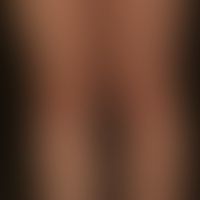
Circumscribed scleroderma L94.0
Scleroderma circumscripts (type band-shaped circumscripts scleroderma). 32-year-old woman, for years progressive symptoms. no significant symptoms. no restrictions in mobility.

Toxic epidermal necrolysis L51.2
Toxic epidermal necrolysis: Large, superficial, towel-like detachment of the skin after ingestion of allopurinol.


